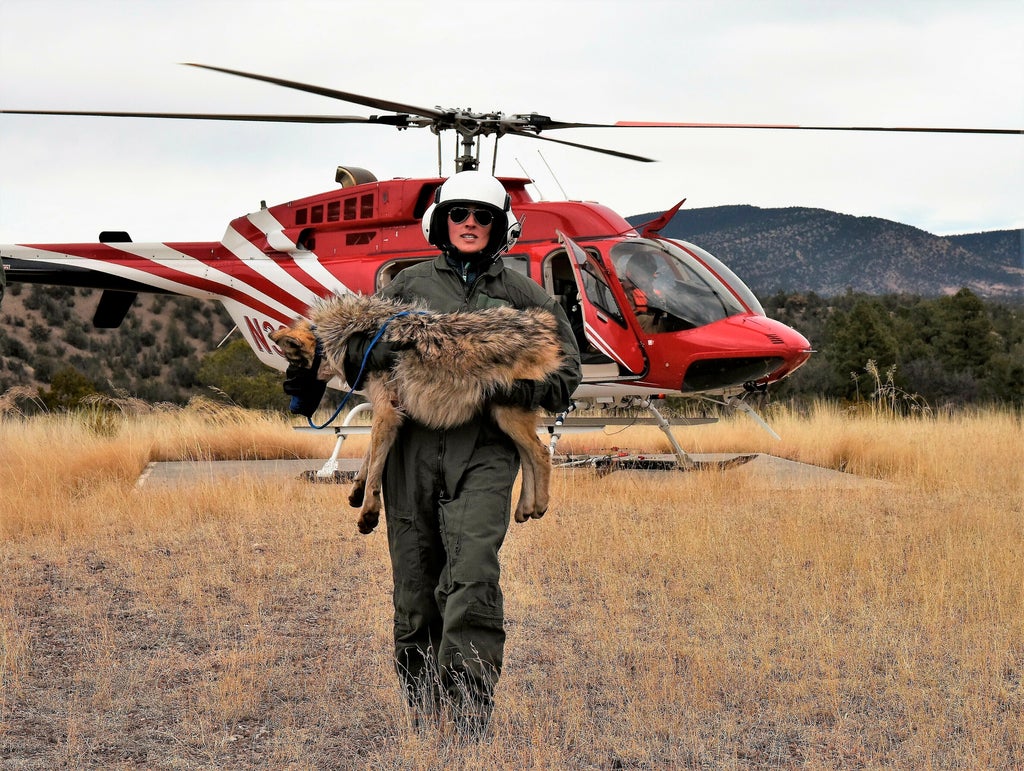
Prompted by a court order, federal wildlife managers have issued a new draft plan for managing Mexican gray wolves in the Southwestern U.S. in an effort to address illegal killings of the endangered predators.
The plan calls for millions of dollars to be spent over the coming decades on more education, outreach, increased law enforcement patrols and other projects to boost the wolf population across its historic range in Arizona, New Mexico and in Mexico.
The U.S. Fish and Wildlife Service recently reported that Mexican wolves saw their numbers increase for another consecutive year but that overall growth of the population has been tempered in part by human-caused mortalities, which include illegal killings and being struck by vehicles.
The draft made public last week is meant to address the longstanding concerns of environmentalists who claim the agency is not doing enough to ensure the recovery of the species. While encouraged by the proposed changes to address what they call conflict hot spots, some environmentalists say pressure on the wolves will continue until the recovery area is expanded and the predators are allowed to roam.
Bryan Bird with Defenders of Wildlife said his group believes the revisions should have considered an expansion northward into the Grand Canyon and southern Rocky Mountains.
“Though the proposed revisions improve this imperiled animal’s chances at survival, Defenders remains concerned the plan still fails to prescribe what is needed for full recovery of the world’s most endangered subspecies of wolf,” he said in a statement.
Meanwhile, federal and state managers still struggle to curb wolf-livestock conflicts. Ranchers in Arizona and New Mexico say wolves continue to kill cattle despite efforts to scare the animals away from herds using tools that range from flagging along fence lines, riders on horseback, pasture rotations and even diversionary food caches.
Under the plan, the wolf recovery team would do more outreach in local communities “to improve hunter, trapper, rancher and public awareness and tolerance." That would include handing out materials with biological information about the animals and conflict reduction techniques.
Wildlife managers also want to increase law enforcement patrols in areas identified as mortality hot spots to help with public education, the deterrence of illegal killing and the investigation of wolf mortalities.
“We added this action because we expect the presence of increased law enforcement to have a chilling effect on the intentional illegal killing of Mexican wolves,” officials stated in documents supporting the revisions.
Michael Robinson with the Center for Biological Diversity noted that fewer than 10 people have pleaded guilty to illegally killing wolves and that many of the cases go unsolved.
According to the Fish and Wildlife Service, about three-quarters of documented Mexican wolf deaths in the recovery area between 1998 and 2020 were attributed to human causes. Illegal killing counted for 119 of the 216 documented mortalities. Vehicle strikes were a distant second, and many causes of death were listed as unknown.
Wildlife officials say modeling used for the recovery plan suggests that the Mexican gray wolf population could grow or remain stable as long the mean mortality rate is less than 25% and if mortality among pups remains low at 13%. Officials describe the current rate of human-caused wolf deaths as excessive.
The Fish and Wildlife Service expects recovery of the species to take between 25 and 35 years, with the estimated cost nearing $203 million. The agency's estimates show that the price tag for reducing human-caused mortalities of Mexican gray wolves in the U.S. is expected to top $6 million over the next 25 years, with expenses likely increasing each year.
In the recovery plan, federal officials also say they will continue to seek additional funding for programs designed to offset the wolves' direct and indirect costs to ranchers.







